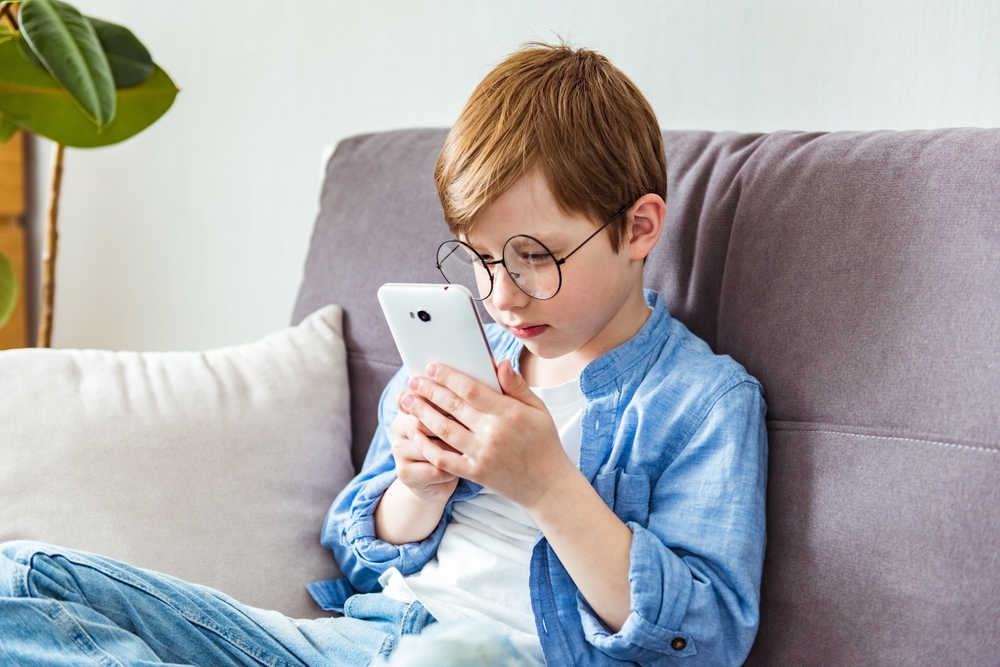
Child myopia is not just an inconvenience. It's a condition that can significantly affect a child's life. It can hamper their academic performance, restrict their participation in sports and other outdoor activities, and even lead to severe eye conditions in the future. It's essential for parents and caregivers to understand this condition, recognize its signs early, and seek professional help.
How to Recognize the Signs Your Child Has Myopia
Recognizing the signs your child has myopia is the first step towards managing this condition. Children with myopia often exhibit certain behaviors that hint towards their vision troubles. They may squint or frown while trying to focus on distant objects or hold books and other objects very close to their eyes. Complaining of headaches, eye strain, or fatigue after visual tasks can also be a sign of myopia.
Children with myopia may show academic difficulties, particularly in subjects that require visual presentations like mathematics and science. They may avoid sports and other outdoor activities that require good distance vision. Also, they may show a lack of interest in exploring their surroundings, which is unusual for their age and development.
The Role of an Optometrist in Myopia Detection and Treatment
An optometrist plays a crucial role in detecting and treating child myopia. The doctor will perform a comprehensive eye exam that checks not only the visual acuity but also the overall eye health. This includes checking the eye coordination, color vision, depth perception, and peripheral vision.
Optometrists use various tools and techniques to detect myopia. This includes retinoscopy, where a light is shone into the eye to observe the reflection off the retina, and refraction, where various lenses are used to determine the prescription for eyeglasses or contact lenses. In case of myopia, the optometrist will find a negative refractive error, indicating that the light is focusing in front of the retina.
Once myopia is detected, the optometrist will discuss the treatment options and recommend the best one based on the child's age, lifestyle, and the degree of myopia. They may also suggest regular follow-ups to monitor the progression of myopia and adjust the treatment as needed.
Treatment Options for Child Myopia
There are several treatment options for child myopia, ranging from corrective eyewear to vision therapy to surgical procedures. Eyeglasses and contact lenses are the most common treatments. They correct the refractive error by adjusting the focus of light onto the retina, resulting in a clear vision. The prescription may need to be updated regularly as the child grows and the myopia progresses.
Pharmaceutical treatments involve the use of certain eye drops, like atropine, that have been found to slow down the progression of myopia in some cases. However, these treatments are usually reserved for progressive or high myopia due to potential side effects.
Tips to Prevent or Slow Down the Progression of Myopia in Children
While it's not completely possible to prevent myopia, there are certain strategies that can help slow down its progression. One of the most effective ways is to encourage your child to spend more time outdoors. Studies have found that outdoor activities can delay the onset and slow down the progression of myopia, possibly due to the exposure to natural light and the use of distance vision.
Limiting screen time and ensuring good reading habits, such as maintaining a proper reading distance and lighting, can also help.
Ensuring Your Child’s Eye Health for a Brighter Future
Recognizing the signs your child has myopia, getting regular eye exams, understanding the role of an optometrist in myopia treatment, exploring the treatment options, and knowing how to prevent or slow down its progression are all crucial aspects of dealing with this condition. Early detection and management are our best tools against myopia and its complications.
If your child is showing signs of myopia, consult our optometrist at VisionCare Optometry at our Elk Grove, California office. We provide the highest quality eye care services and products for the entire family. Please call (916) 512-1600 to schedule your child’s eye exam appointment today.








